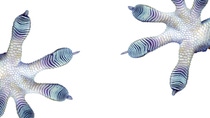Chi siamo
Jurek Vengels

Creating Chemistry: Mr. Vengels, nanotechnology is considered a promising technology of the future. It is already providing benefits, for example, in membranes for water treatment and in cancer therapy. Yet you warn that caution is necessary. Why?
Jurek Vengels: At BUND, we do see many opportunities in nanotechnology – but also risks. Many questions simply haven’t been answered yet: What effect do nanoparticles have in the environment? And what might they do to the human body? That is why we advocate first investigating these risks and then determining which materials we can use safely and what we might have to avoid using.
Not all nano products are the same. Are there any applications that you are particularly concerned about?
In my view, it is especially problematic when unbound nanomaterials are used because these can then get into the environment, or people can come into direct contact with them. In food, textiles and cosmetics, for example, nanomaterial could be absorbed by the body and we simply don’t know enough about this. We are also worried about particular nanomaterials, such as certain kinds of carbon nanotubes. When these are inhaled, they can have the same effect as asbestos in the lungs: They can cause inflammatory reactions and eventually lead to the development of tumors.
Why is BUND, an environmental organization, interested in nanotechnology?
We believe that this is an important technology with a lot of potential. And we also hope that ‘nano’ will bring advances in environmental technologies. There are definitely some interesting applications in wind and solar energy which can create improvements – although much of what is advertised has not yet been realized. It is certainly a technology that we will be coming into contact with more frequently – both humans and the environment in general. As such, it is an important issue that the environmental movement should address. We are, of course, very interested in the issue of releasing it into the environment – what consequences will that have? For example, one of our particular worries is that nanosilver in sewage sludge will be spread on fields, returning it to the food chain and eventually into human bodies.
But in Germany, waste and wastewater are properly treated and disposed of, aren’t they?
With nanosilver, there is the fear – especially with regard to wastewater treatment facilities – that this substance, similarly to traditional silver, could harm the microorganisms that keep the water in the plant clean. This could possibly prevent the wastewater treatment plant from functioning properly and thus disable the environmental protection mechanisms. Studies show that nanosilver is generally harmful to aquatic organisms. So we say: ‘Wait a minute!’ We need to proceed cautiously. Especially because the use of nanosilver is very widespread. It is added, for example, to detergents or clothing to prevent odors and can be released into the environment when the clothes are washed.
How much do we really know – apart from some specific examples – about the negative effects of nanotechnology on humans and the environment?
The terrifying thing is that we know so little. Recently published preliminary findings from a research project by a high German federal authority found that much work is being done on the fundamentals of analysis and that there are barely any concrete results. Unfortunately, when it comes to nanotechnology, we have been hearing for years that there will soon be good methods to evaluate the particles, but there never really seems to be any progress.
Why, in your opinion, does safety research lag so far behind the technological development?
The majority of public funding for nanotechnology flows into development, while only about 5% is directed to risk research. So there is always a gap between what the industry is bringing onto the market and the knowledge about what these materials are doing to us and the environment. We are therefore calling for the share of funding spent on risk research to be increased to between 10% and 15%.
What do you expect from the companies that use nanotechnology to develop their products?
They should test their products very well for potential risks if they are using nanomaterial. There are companies that are already carrying out very extensive testing, while others perhaps do not make quite as much of an effort. The companies that test insufficiently or not at all could cause a crisis if they use a material that turns out to be problematic – this would then also discredit the entire industry. It should therefore really be in companies’ best interest to have better regulations on nanomaterial.
What form could regulations take that would reconcile safety for humans and the environment with technological progress?
We are calling for a general labeling requirement for nanomaterials in consumer applications and a registry that lists these applications. It should also contain more in-depth information, such as: What purpose does the nanomaterial serve in the product? What effect can it have? Where are there possible gaps in the research? This would allow me as a consumer to find out more and make an informed choice. From mid-2013, there is an E.U.-wide labeling requirement for nanoparticles in cosmetics and this will apply for food as well from the end of 2014. But we consider this too slow, so we have decided to take action ourselves. BUND has created an online database for nanoproducts. Our goal is to create basic transparency so consumers can know what they are buying.

